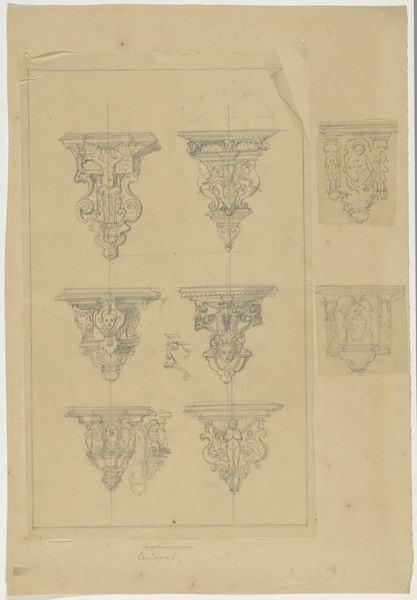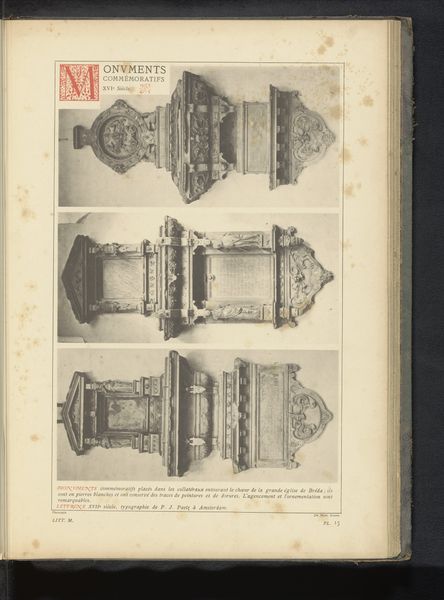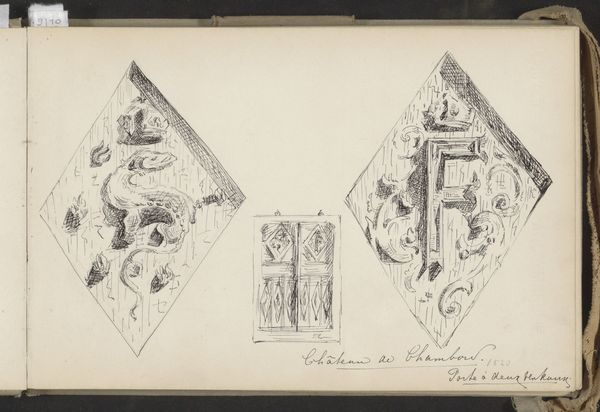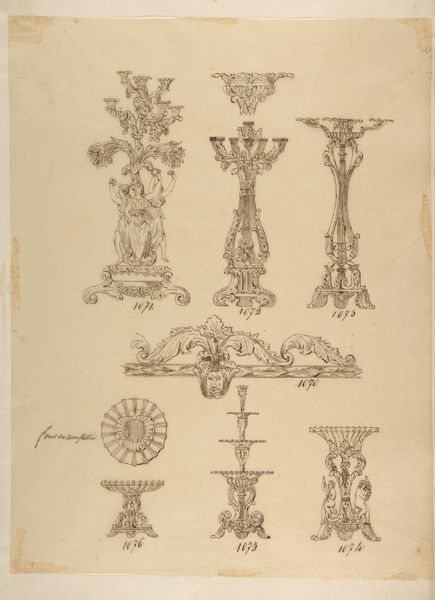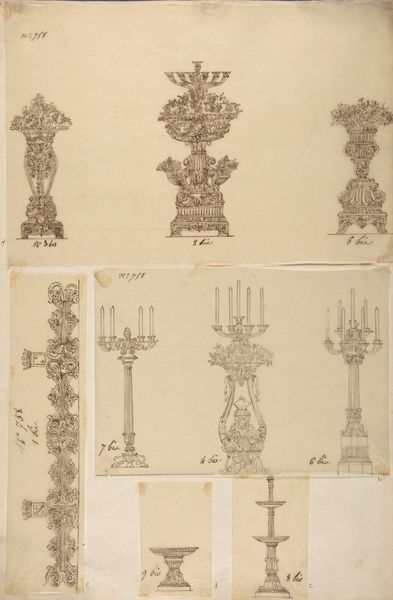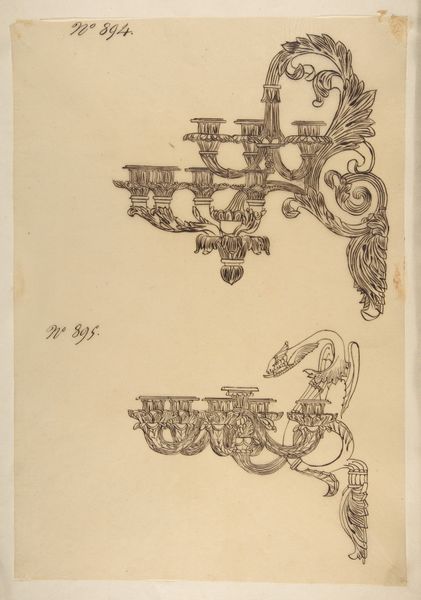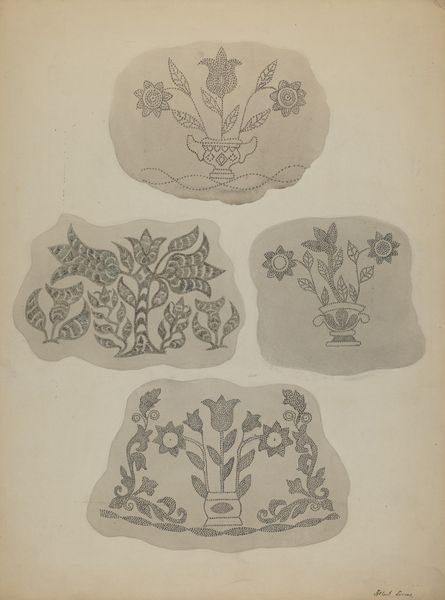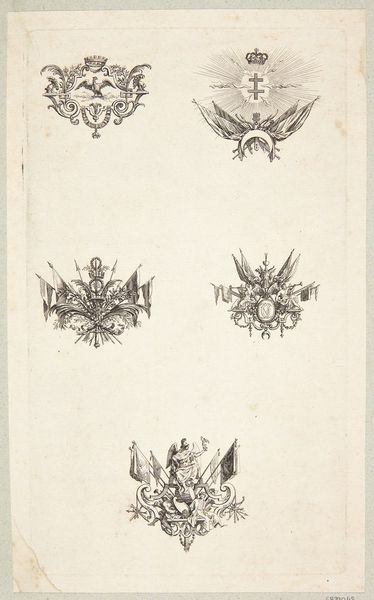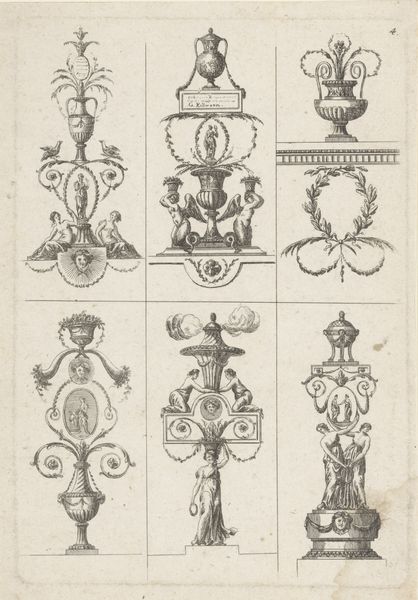
drawing, paper, pencil
#
drawing
#
furniture
#
paper
#
geometric
#
pencil
#
decorative-art
Dimensions: (.1) 4 9/16 x 2 1/2 in. (11.6 x 6.3 cm) (.2) 4 3/8 x 2 11/16 in. (11.1 x 6.9 cm) uneven (.3) 3 7/16 x 2 in. (8.8 x 5.1 cm) (.4) 3 3/4 x 3 3/16 in. (9.6 x 8.1 cm) (.5) 3 3/8 x 2 9/16 in. (8.5 x 6.5 cm) (.6) 3 9/16 x 3 1/8 in. (9 x 8 cm)
Copyright: Public Domain
Editor: This drawing, titled "Six Designs for Hanging Shelves," comes to us from sometime in the 1800s, anonymous, done in pencil on paper. What strikes me is how ornate these shelves are! I never thought shelving could be so… extra. What can you tell me about this piece? Curator: It's fascinating how these designs reflect the social value placed on display and ornamentation during that period. Consider the rise of industrialization; objects became more readily available, fueling a desire to showcase possessions as symbols of status and taste. Do you notice the geometric precision alongside the flourishes? Editor: Absolutely, there's this interesting tension. The basic shelf shapes are simple geometric forms, but they are draped in so much detailing. It's almost contradictory. Curator: Precisely! That juxtaposition highlights a crucial point about the era. It reflects how emerging industrial capabilities allowed for mass production of basic forms which were then elevated through handcrafted ornamentation, making them desirable and aspirational. In which social contexts do you imagine these shelves being displayed? Editor: I imagine them in wealthy homes, drawing rooms maybe, filled with porcelain or other delicate trinkets. Somewhere they’d catch the eye. It’s interesting to consider this in light of their intended function; purely functional shelving doesn't need any of this ornamentation. Curator: Indeed. These designs represent more than mere storage. They showcase aspirations, taste and socio-economic position. Reflecting on their role, what statement do you think these shelves were designed to make within a domestic space? Editor: They certainly elevate humble household items to art objects, almost. Now, I see it less as storage, and more of a small-scale monument to consumer culture. Curator: Exactly. And think about the museum's role in preserving and displaying this drawing; aren't we continuing that act of valuing and interpreting objects within a specific historical and cultural narrative? Editor: That's a fascinating point I hadn't considered. Thank you!
Comments
No comments
Be the first to comment and join the conversation on the ultimate creative platform.
